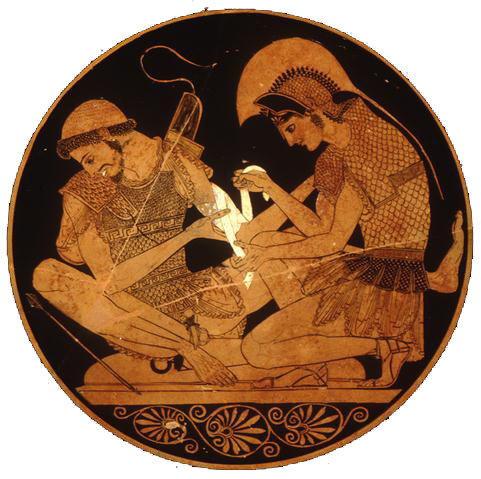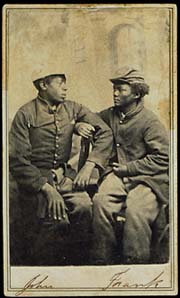












A Man2Man Alliance Policy Paper
by
With special thanks to
Dr. Joe McIlhaney and the staff of the Medical Institute for Sexual Health
Please note: This essay, like all other material on this site, is protected by copyright. It may NOT be reproduced, in whole or in part. Webmasters and hard copy publishers must contact Bill Weintraub for permission to reproduce any part of this essay or any other material from this website.
This Man2Man Alliance policy paper relies heavily, though not exclusively, on information researched and compiled by the Medical Institute for Sexual Health.
The Institute, founded by a physician and staffed by health professionals, is a strong supporter of sexual fidelity in human relationships.
That's not because the Institute is a religious-right front.
It's because the people at the Institute have gone where the scientific data on STD transmission, and on the relative health of partnered and non-partnered people, have taken them.
You may not agree with their, or our, conclusions.
But every statement of fact in this paper is documented.
Readers are encouraged to go to the original sources, and decide for themselves whether the information presented is accurate and relevant to their own lives.
The Man2Man Alliance -- and its subsidiaries Heroic Homosex, Frot Men, Heroes, and Frot Club -- all endorse Fidelity: the exclusive physical and emotional love of one man for another.
For two reasons:
In this Man2Man Alliance policy paper, we examine both the problems of promiscuity and the benefits of Fidelity.
Preface
Introduction

According to the Medical Institute for Sexual Health,
A major epidemic of sexually transmitted disease (STD) has developed during the last 30 years. In the 1960s syphilis and gonorrhea, both easily treated with penicillin, were the only important STDs. Today there are over 20 significantly prevalent diseases with 15.3 million newly infected Americans each year...
The problem is compounded because many individuals infected with the most common STDs -- chlamydia, genital herpes and human papillomavirus [HPV] -- do not experience noticeable symptoms and do not know that they are contagious. [29]
[emphasis mine]
Of course, among "men who have sex with men" (MSM) these diseases are most prevalent among those who are promiscuous and who practice anal and oral sex.
The problem is particularly acute among men who are anally receptive.
For example, it's been reported that the risk of anal cancer, a consequence of HPV infection, among these men is 30 times higher than in the general population.[37]
While HPV has now been implicated in anal [10], cervical [5], and oral cancer [8], and cancers of the head and neck [5].
STI's vectored by anal penetration, oral sex, and anal-oral contact, and spread through promiscuity include:
Of this list, HIV Type 1 and 2 are universally fatal while gonorrhea, syphilis, hepatitis B and hepatitis C are potentially so; that's six out of twenty, or 30% -- not great odds.
Those diseases transmitted through oral-anal contact (which we maintain should not be termed "sex," since neither the mouth nor the anus contain genital tissue) include shigella, salmonella, giardiasis, and amoebiasis; none of these infections are easily treated, and some can cause problems for years.
MSM can also acquire these infections through oral contact with a partner's scrotum or even, if he's sweating, other parts of his body such as his chest and nipples; and of course most can be transmitted through oral sex as well.
In addition, anal penetration is, among male-male sexual acts, uniquely dangerous mechanically: anal fissures (tears) and leakage of rectal secretions from the anal sphincter are two of the best known, very common, problems. [18]
And even hemmorhoids can pose significant risks.
One anally-vectored pathogen (HIV) alone was for years the leading cause of death among young men in America, is still a major killer of African-American men, and is currently killing vast numbers of people throughout the world, including significant numbers of MSM who acquire the disease through promiscuous anal sex.
As of 2003, there had been more than 20 million deaths from HIV / AIDS worldwide, while another 37.8 million people, most of whom were expected to die, were living with the disease. [23]
At present it's estimated there are more than 900,000 Americans living with HIV -- a number larger than at any previous time in the history of the epidemic; about three-quarters of those -- minimally 675,000 gay and bisexual men -- were infected through anal penetration. [23]
Once again, it must be emphasized that with the exception of gonorrhea and syphilis, none of these diseases posed a significant problem prior to the sexual revolution of the 1960s and the greatly accelerated pace of human promiscuity, which created the necessary pre-conditions for the emergence of new and ever more lethal STIs.
As an openly gay and sexually active man who came out in 1972, I witnessed that revolution and its consequences for 30 years, the first ten of which happened to coincide with what gay writer Brad Gooch later termed "The Golden Age of Promiscuity."
The truth is that it wasn't golden. Even if you were young and relatively pretty, what began in fun soon came to feel compulsive and filled with rejection. And in those ten years epidemics engulfed the gay male community one after the other, starting with crabs, then scabies, then syphilis and gonorrhea, then herpes, then intestinal parasites and hepatitis, and finally HIV.
So the list of ills went from amusing to annoying to scary to dangerous to deadly -- in less than a decade. [41]
To understand how that happened, we need to understand the relationship between
There's no question that sexual promiscuity is dangerous -- indeed, it can be fatal.
How does promiscuity create disease?
Through the establishment of ecological niches which pathogens evolve to fill and in which they flourish.
HIV is the best known of these pathogens.
Gabriel Rotello, in his classic 1998 book Sexual Ecology: AIDS and the Destiny of Gay Men, demonstrated conclusively that a shift away from less dangerous forms of sex and toward anal sex and promiscuity in the 1970s -- resulting in what we of the Alliance have called "the great anal sex frenzy of the last 30 years" -- was responsible for the emergence of HIV as a major killer. [34]
Of course, among MSM, HIV is transmitted almost exclusively through anal penetration; were MSM to stop participating in anal penetration tomorrow, the rate of new HIV infections would plummet, and HIV would, over time, disappear from the MSM population.
However, it's not just anal penetration which was responsible for the MSM HIV epidemic; rather, it was the unprecedented scale of gay male promiscuity, which expanded exponentially in the 1970s, aided and abetted by entrepeneurs who opened various MSM sex venues, including bath-houses and sex clubs, which were ideally suited for the transmission and propagation of disease.
Which explains why, although HIV has been found in human blood samples dating as far back as 1959, AIDS did not officially emerge until 1981.
The pathogen had existed since at least the late 1950s, [35] but the platform for its rapid transmission and spread didn't exist until the mid-1970s.
One way of understanding what happened is by examining a gradient of sexual risk behavior, such as this one created by UCSF epidemiologist James Chin to describe the process with HIV:
Gradients of Sexual Risk Behaviors for men who have sex with men (MSM):
Highest: "Bathhouse" or sex club type setting where large numbers of MSM have up to 10-20 sex contacts in a single day or night
Higher: Sex with multiple partners on a concurrent basis
High: Sex with multiple partners on a serial basis
Lowest: A sexually-exclusive, monogamous relationship [6]
Among MSM, then, group sex and/or a high number of partners in a single day or night is the most efficient way for a pathogen to propagate and spread.
Followed closely by sex with multiple partners on a concurrent basis. (For more about concurrency, see below.)
And then by sex with multiple partners on a serial basis.
Only a sexually-exclusive, "monogamous" relationship is risk-free.
These facts are well-known. Nevertheless, and despite the HIV / AIDS epidemic and its grisly toll on MSM life, in most cities with a medium-to-large gay male population, bathhouses and sex clubs, often disguised as dance clubs, still flourish.
Another example of disease creation by gay men is the epidemic of amoebic dysentery and giardiasis which swept over the American gay male community in the late 1970s, just prior to the outbreak of AIDS.
Previously, these diseases had been found primarily among people who lived in the tropics, and visitors, such as anthropologists, to the more remote and primitive areas of the tropics.
But in the late 1970s, Brazil became a popular destination for American gay men looking for a vacation which combined beautiful beaches and readily available MSM sex.
And that population of gay men brought with them a behavior which was a direct outgrowth of the new-found popularity of anal penetration: oral-anal sex, which combined fellatio with an erotic focus on the anal sphincter itself.
The result was the rapid spread of two third-world diseases, normally associated with poverty, inadequate public sanitation, and poor personal hygiene, to a population of affluent, first-world men who were supposed to be hygienically sophisticated.
The ensuing epidemics among American MSM of amoebiasis and giardiasis, arguably, rendered them even more vulnerable to HIV, which was already being rapidly transmitted from one man to another.
Today, this process, whereby diseases are quickly and rapidly disseminated among a previously unexposed population, has been greatly facilitated by the internet, which enables strangers with shared sexual tastes to quickly and efficiently "hook-up" for what is basically anonymous, promiscuous sex.
It's not surprising therefore that over the last two years the internet has been implicated in outbreaks of syphilis and in the rise in new HIV infections among American MSM. [25]
But of course it's not just these two diseases.
Sexual promiscuity in the modern world, in which a man can acquire an STI in Bangkok and carry it to New York in less than 24 hours, has created a situation in which it's possible for pathogens to spread and mutate with unprecedented speed, while medicine's ability to treat often lags far behind.
A good example is a recent outbreak of Lymphogranuloma Venereum (LGV) among MSM in Holland.
According to a news report on PlanetOut.com,
LGV, which is closely related to the STD chlamydia, causes painless genital lesions at first. If untreated, lymph nodes around the sex organs begin to swell, leading to symptoms like fever, decreased appetite and malaise. In gay men who practice anal sex, the disease can strike the rectal area, leading to a variety of unpleasant gastrointestinal symptoms.
LGV is rare in the West, but common in Africa, Southeast Asia and the Caribbean. While treatment with an antibiotic called doxycycline wipes out the disease, doctors worry that the symptoms of the illness make it easier for men to transmit and become infected with the AIDS virus.
Dutch officials first noticed an LGV outbreak in the city of Rotterdam in December 2003. Most of those infected reported having unprotected anal sex and taking part in fisting [the insertion of the fist into the anus and rectum]. Men at highest risk also tended to be HIV-positive, members of the leather community and active partiers [that is, men who participate in a combination of drug use and promiscuous sex, often in dance or sex clubs where multiple partners and group sex are the norm].
The officials warn that many of the diagnosed gay men had sex with men from other parts of Europe and may have spread the disease to other countries. Earlier this month, French officials reported an upsurge in LGV cases. [9]
Note that LGV is presently treatable with doxycycline. However, as the STI infects new populations, drug-resistant strains will no doubt emerge -- as has already happened with HIV, syphilis, and the staph infection MRSA, which is most commonly seen in prisons and hospitals, but has also been found in a "clusters" of gay men in both Europe and America. [26]
(In one instance, MRSA had infected a group of gay men who had participated in group sex and shared a common container of "personal lubricant" [12]; while an article in POZ noted that "A technique called molecular fingerprinting showed the infections to be identical from one patient to another." [7] As we'll see when we look at concurrency, relationships such as group sex and of course shared partners are common among individuals infected by the same pathogen -- even if those relationships are not apparent to the individuals infected.)
Why is the emergence of drug-resistant strains so predictable?
Because any time there's a selection pressure (such as an antibiotic or antiviral) on a given population of pathogens confined to an environment, the individuals most able to survive in that environment will do so -- that is, the ones that can't be stopped will survive.
Moreover, those surviving pathogens may not simply be immune to the antibiotic or antiviral, but actually more dangerous to their host.
Because in theory, pathogens, as they evolve over time, become more efficient and thus more lethal.
As New American Foundation fellow James P Pinkerton observed in an op-ed in the LA Times, despite 20 years of research,
[T]he AIDS virus survives. Unimpeded by vaccines, unthreatened by eradicating medicine, it is free to continue striking, infecting and -- following what scientists know as a Darwinian inevitability -- mutating into newer and more lethal forms. [31]
Even MSM who shun bath-houses, drugs, and dance clubs and have no involvement in group sex, are still at risk if they're promiscuous -- or, if their partner is promiscuous.
A recent study reported in the journal Sexually Transmitted Diseases examined the STD risk associated with people having other partners and their lack of awareness of their partner's partners, stating that
A person's risk of acquiring a sexually transmitted disease (STD) has been empirically associated with having concurrent sexual partners (individual's concurrency) and, in theory, with their partner having concurrent partners (partner's concurrency). ...
Just 26 percent of individuals whose partners had other partners knew of this concurrency. In multivariate models, STD in individuals was independently associated with partners' concurrency, [and] not knowing of a partner's concurrency...
The study demonstrates that STD is associated with partner's concurrency and with lack of awareness of partner's behavior... [11]
Concurrency is one of the factors which makes promiscuity so dangerous to people who are themselves not promiscuous.
For while you may feel you know and can trust your partner, if he has other partners, you may not know about them, or he may not know what they're actually doing sexually.
The more partners, the greater the risk.
So while you may limit yourself to one partner, if he does not, he can easily contract an STD and pass it on to you.
That happened to many MSM during the height of the American HIV / AIDS epidemic, and is no doubt responsible for the rapid spread of a different virus, H P V, in the MSM community.
Because a virus will interact with every individual that it can successfully infect. The fact that organisms are infected by the same pathogen implies a relationship between the individuals infected, even if it's not immediately apparent -- particularly to those individuals.
Condoms, which have been greatly promoted by AIDS Service Organizations, such as New York's GMHC and San Francisco's AIDS Foundation, as offering protection for promiscuous MSM, in reality are of very limited utility.
For example studies of syphilis and gonorrhea transmission have found that
Syphilis transmission is reduced by 29 percent to 50 percent with 100 percent condom use. Although the data about syphilis transmission is limited, current data show that even with 100 percent condom use, there remains a 50 percent to 71 percent relative risk of syphilis infection. [1] [4]
Gonorrhea transmission is reduced by approximately 50 percent with 100 percent condom use. Although the data about gonorrhea transmission is limited, current evidence shows that even with 100 percent condom use there remains a 50 percent relative risk of gonorrhea infection. [44] [1] [4]
In order to understand why condoms are of limited efficacy, we need to understand the notion of "cumulative effectiveness" -- that is, the effectiveness of an intervention over time.
According to the Medical Institute:
Cumulative effectiveness refers to the likelihood of becoming infected with an STD over time. In other words, to what extent does sexual activity with an infected partner over an extended period of time increase the risk -- that is, create a cumulative risk? And to what extent are condoms effective at reducing this cumulative risk -- that is, provide cumulative effectiveness?
Authors Mann, Stine and Vessey published an article in June of 2002 that expanded on this concept of cumulative effectiveness. These researchers used the role of disease-specific infectivity and the number of disease exposures to determine the long-term effectiveness of the latex condom. [28] The authors explored the scenario of females having sex with males infected with gonorrhea. The risk of females acquiring gonorrhea from infected males is believed to be 50 percent from one act of sex without using a condom. [24]
For their calculations the authors used a 3 percent slippage and breakage rate. Assuming the condoms were used correctly and allowing only for a 3 percent chance of slippage and breakage, 1.5 percent of women in this scenario would be expected to acquire gonorrhea after one act of sex with an infected partner. After 10 acts of sex one would expect 14 percent of the women to become infected and after 30 acts of sex with an infected partner, the expected risk would escalate to 37 percent even with perfect condom use. While the authors did not address the scenario of incorrect or inconsistent use, one would expect these additional factors to dramatically increase one's risk of infection.
Similarly, a meta-analysis (a review of all the relevant literature) by the respected Cochrane Institute found that in serodiscordant heterosexual couples -- that is, couples in which one partner was HIV + and the other HIV negative -- the negative partner "seroconverted" -- that is, became infected with HIV -- 20% of the time, despite "consistent" condom use. [39]
Thus, over time -- usually about a year -- the condom failure rate, failure being defined as HIV infection, was about 20%.
That means the cumulative effectiveness of condoms was only 80% -- a far cry from the 98-99% effectiveness rate claimed by many condom advocates.
(By the way, studies of serodiscordant *heterosexual* couples have found that the women in such couples are 10 to 20 times more likely to seroconvert due to anal penetration than they are due to vaginal intercourse. [22] Those figures tell us that anal penetration is a more efficient mode of transmission for HIV than vaginal sex, and that anal therefore is significantly more dangerous.)
So cumulative effectiveness matters.
And over time, the cumulative effectiveness of condoms always deteriorates.
In part because other than a very few, very meticulous individuals, no one uses condoms 100% consistently -- and for a very good reason: the user's sexual experience is considerably diminished.
And because even fewer men use them correctly 100% of the time -- after all, to do so requires six different steps after the penis is erect.
And because condoms themselves inevitably fail -- most commonly through slippage, breakage, or leakage.

Every man who has sex with men -- and / or with women -- reading this knows it's true: that condoms dull your sensation of sex, that it's difficult to both maintain an erection and get the condom on your penis, and that even then from time to time the condom fails.
In addition, most men who take the insertive role in anal penetration know that it's not difficult to deceive an anally receptive partner, particularly since he's most often prone or on all fours, and pretend that you're wearing a condom when you're not.
Just as most men who have sex with women know that you can slit a condom so that it breaks after you've entered her, giving her the illusion of safety while you have a fully genital experience.
All in all, and given what we know, the Cochrane's cumulative failure rate of 20% seems low.
And, in terms of MSM, it no doubt is.
For the Cochrane looked at heterosexual couples, most of whom were no doubt doing vaginal sex most of the time.
Anal penetration is far rougher on the condom; and the cumulative failure rate must be higher.
If condoms have had any impact on MSM HIV transmission -- and in my view that's a very big "if" -- it's only because HIV's infectivity is low.
Most other STIs, particularly those which are bacterial, are far easier to contract.
In addition, condoms have been shown to be of limited utility in protecting us from other diseases, such as HPV [44] and herpes [38].
Because the condom can only "protect" the area it covers. Lesions left uncovered by the condom can freely shed pathogens which can then migrate to vulnerable mucosal areas or infect them just through touch. [44]

Nevertheless, large numbers of AIDS organizations and workers, including AIDS Service Organizations, other non-governmental organizations, "safer-sex educators," and AIDS academics of various stripes, continue to push the social marketing of condoms, in what are known as
Yet these unrelenting promotions of condom usage among MSM, which tell them to "use a condom every time," have serious drawbacks:
1. they re-inforce the idea among MSM that "every time" men have sex with men, it will be anal; and
2. they disinhibit -- by promoting a false sense of safety, they make it more likely that MSM will have more partners, be less selective about their partners, and choose to do anal sex, the single most dangerous sexual act, with those partners.
That's the reason for the finding, which seems counter-intuitive, that men who use condoms have a *higher* risk of HIV infection than those who don't [45] :
Condom use is associated with a constellation of unsafe behaviors which effectively negate the condom's limited utility. [33]
As we'll see below, that condoms continue to be so aggressively marketed by public health workers is a reflection not of science, but of ideology.
Whereas in the early 1960s, there were just two widely prevalent STDs, both easily treated, there are now, after 40 years of increasingly widespread promiscuity, more than 20 serious STDs, among them diseases now found worldwide which previously were confined to limited geographic areas and specific populations.
At least one of these diseases is universally fatal; depending upon the medical care available and the condition of the person afflicted, others are frequently lethal as well.
Further, the ongoing spread of promiscuity guarantees that more diseases will appear, while those already in existence can be expected to become resistant to treatment and more deadly.
Moreover, the one intervention much touted as offering significant protection, the condom, is actually of limited efficacy, and is thought by many experts to be disinhibiting and so to actually increase the prevalence of unsafe sexual behavior, particularly among gay and bi men.
The truth is that condom promotion is what public health workers call a "risk-reduction" methodology; and that the only sure way to *avoid risk* is to eliminate those behaviors that expose you to sexually transmitted pathogens.
In the case of MSM, promiscuous anal penetration and oral sex are the leading risk behaviors; avoiding promiscuous anal penetration would eliminate almost all new HIV infections, while avoiding both anal and oral would eliminate almost all MSM STIs.
There are MSM activities which are considered to be very low risk: most especially Frot and mutual masturbation [27] ; and as we will explain, there are other, very compelling reasons for MSM to choose these activities as well.
Nevertheless, we should be clear: no sexual behavior outside of fidelity to one uninfected lifetime partner can confer absolute protection.
Men who are promiscuous, even in low-risk activities, still run the risk not only of acquiring an STD, but of being part of a process of disease creation which will, ultimately, affect everyone in the community.[15]
For those reasons, in HIV and other STD prevention programs, The Man2Man Alliance endorses "risk avoidance" strategies, and supports Chuck Tarver's formulation of ABC -- Avoid Anal sex, Be faithful, use a Condom only if you must. [36]
And of course the Alliance recommends that men who avoid anal choose Frot -- which is highly pleasurable, mutually genital, phallus-on-phallus sex, and very low risk.

So far we've talked about the most obvious downside to promiscuity: STDs, some of which are fatal and all of which are a problem.
But suppose there were no STDs.
Suppose medical science had succeeded in outwitting every pathogen on earth.

|
Would Fidelity still matter?
Yes.
Unquestionably.
For Fidelity is a core human value.
Fidelity's at the heart of the human psyche.
All human beings need devoted, faithful, and caring relationships.
And those who say they can live without Fidelity, inevitably, upon close questioning, reveal that all they've done is made a mental jog around the issue without facing its consequences head on.
I saw proof of that during the acute phase of the HIV epidemic in San Francisco, in my case from 1989 through 1995, before new therapies such as HAART had made it far easier to cope with the illness.
And that proof was in the large number of AIDS-afflicted men who asked, and received permission, to return to former lovers or boyfriends for their caregiving.
They didn't look for succor among the guys they'd tricked with in bars and bathhouses and backrooms; because they knew those men couldn't and wouldn't do that for them.
But their ex-lovers could and did.
It should be noted that when the ill returned to their ex-lovers, what happened was not about sex.
For most of these men, the sexual aspect of their relationship had ended even before the relationship itself, and before the illness began.
But the guys still *cared* about each other.
And it was that caring, that sense of love and devotion, which enabled the men I knew to *care for* their sick ex-boyfriends and former lovers, sometimes for years, under conditions which were often horrendous, conditions of terrible, intractable illness and, sometimes, desperate financial want.
So what happened wasn't about sex -- it was about human love and devotion.
And it happened most often between two individuals who remained, despite the end of a sexual relationship, emotionally bonded.
Don't let people tell you, by the way, that some AIDS patients got by solely on networks of friends.
Yes, there were some people who were good at creating such networks, and survived through them for awhile.
But a friend is not the same as a lover, a partner, a spouse.
A friend cannot be expected to deal with the series of extreme crises brought on by an illness like AIDS, crises which often extend over a period of years.
Such a task is simply too physically and emotionally grueling.
For that you need someone with a very great committment -- the sort of committment that's the result of a loving union between you and another guy.

Nowadays, social scientists are becoming increasingly aware of the benefits of just such stable, long term relationships, particularly to men.
For example, at Rutgers University, a project called "The State of Our Unions" recently issued a report on the benefits of marriage for men.
As you read this excerpt, bear in mind that while the writers are referrring to men in heterosexual marriages, these benefits are true for gay men in stable long term relationships as well:
For men, even more than for women, marriage is a transformative event. Getting married tends to change men's behavior in notable and predictable ways. When men marry, they begin to lead healthier and more productive lives. They work harder and do better financially than men who are not married. They are less likely to hang out in bars, to abuse alcohol or drugs or to engage in illegal activities. They are more likely to spend time with relatives and to be involved in religious and community activities. Their sex lives are better. They are more responsible and involved fathers.
Scholars offer a number of explanations for the positive effects of marriage on men. One key reason is wives [which I'll change here to "partners"]. Partners provide emotional support and physical care to their spouses. They monitor their husbands' health habits, encourage them to seek medical treatment, when necessary, and often find a doctor or health professional to provide such treatment. In addition to TLC, partners commonly provide SDRs (stable domestic routines). Along with better health practices, stable routines help to reduce job absenteeism, quit rates and sick days and thus to strengthen men's workforce attachment. Moreover, ... men gain financial advantages from their partners' workforce participation. Wage-earning partners reduce pressure on husbands to be the sole breadwinner while, at the same time, increasing family income and assets, the traditional measure of a husband's contribution to the family.
But the positive influence of partners does not explain why married men do better than, say, cohabiting men who also enjoy the benefits of having a female domestic partner. The reason for the difference probably has to do with the influence of marriage itself. Marriage includes a norm of male altruism. While it is acceptable for single men to be self-indulgent and carefree, it is not so for married men. Once married, men are supposed to work and care for others. They are expected to voluntarily donate their time and money to their partners and children and also, to a lesser degree, to kin who may need their help. [43]
[emphases mine]

|
In my own life, over two relationships, I've seen the truth of these observations.
For example, in both my relationships, with my first lover, Brett, which ended in his death from HIV / AIDS, and in my second with Patrick, it was and is common for us to provide both tender loving care and stable domestic routines -- both are integral to relationships, and are sorely missed when they're gone.
And of course our sex lives were and are better.
Because a partner understands what his lover wants and needs sexually, and provided you haven't disregarded what's important to you sexually in your choice of a mate, fulfills those needs.
In short, being in a relationship to which you're committed and which you want to sustain brings about conduct which is conservative in the best sense: healthy, caring, sensitive, and always with an eye to the needs, interests, and comfort of both partners.
In the excerpt above, the authors devote an entire paragraph to the positive and transformative effects of what they call "a norm of male altruism."
That's not surprising.
We've often spoken in the Alliance of what sociobiologists call "reciprocal altruism," [16] and how important it is both to our daily social functioning and to the creation of the warrior bond.
For reciprocal male, or, as we call it, warrior, altruism is what makes it possible for soldiers to die for each other, and is the reason why so many veterans of battle speak of having loved their fellow soldiers as much as or more than their families, and call the experience the most emotionally intense of their lives.

Warrior Altruism
Achilles bandages his lover Patroclus' wound
Warrior altruism is perhaps the most essential element in a male-male relationship, and is what MSM who are single and promiscuous miss most.
Because for men, there is simply no substitute for the experience of warrior altruism and that union of two strong and loving men achieved through what we call phallic bonding and expressed as a Fidelity which is till-death-us-do-part.
For millenia, such bonds have been the stuff literally of poetry and song, and the stories of the heroes who lived them -- among them Gilgamesh and Enkidu, Achilles and Patroclus, David and Jonathan, and Cu Chulainn and Ferdia -- have been preserved in epics, myths, and Scripture, all of which are part of the universal heritage of the human race. [42]
Fidelity, then, between loving men, the expression of an absolute and unwavering bond, is not new to history, nor to our time.
But in the contemporary world, and for many years, men having sex with men has been associated in the public mind and too often in the minds of those men themselves, as something which is inexorably promiscuous.
Increasingly, however, in part because of the debate over "gay marriage," gay people and gay writers are recognizing the value of fidelity and making many of the same points about same-sex unions which our Rutgers sociologists did about heterosexual unions in the excerpt we just read.
For example, in a New York Times op-ed supporting same-sex marriage, gay essayist Jonathan Rauch observed that:

- Marriage is "the gold standard for human relationships";
- "Social-science research has established beyond reasonable doubt that marriage, on average, makes people healthier, happier and financially better off"; and
- "For most human beings, the urge to find and marry one's other half is elemental ... [and] central to what most people regard as the good life."
Mr Rauch also speaks, correctly, of "the way in which alienation from marriage twists and damages gay souls"; and quotes Benjamin Franklin to the effect that "where there is marriage without love there will be love without marriage" -- something those of you Frot Men who think you can settle for an analist relationship need to think about.
And Mr Rauch, while calling for the legalization of gay marriage, quite properly recognizes that "Some [gay people], to their credit, [have] built firmly coupled gay lives without the social support and investment that [legalized] marriage brings." [32]
What about those gay men who are in "open" relationships, the men whose profiles and somewhat whorish pictures you see on the big gay internet dating sites with words like, "committed but play"?
Does that work?
No.
Because the decision to have an open relationship is always taken under the guise of reason; left out are the emotional consequences of the act.
But those consequences don't go away.
Sexual infidelity inevitably opens the door to emotional infidelity.
And that emotional infidelity inevitably drives a stake into the heart of the relationship.
Gay couples may survive the ensuing emotional trauma.
But the couple which emerges from that ordeal is not the same as that which entered it.
For nothing can ever erase the knowledge of a partner's emotional disloyalty.
And the doubt thus created can never be fully expunged.

For it makes both men skeptical about the future of the relationship and leads them to wonder whether it was worthwhile to begin with.
Only a sexually exclusive relationship can protect male lovers from the dangers not just of STDs, but of emotional infidelity.
Furthermore, by leaving a relationship "open," the men involved continue to expose themselves to what is, besides disease and emotional turmoil, one of the most dysphoric elements of gay male promiscuity: the constant and unrelenting demand that one meet unrealistic subcultural norms of male beauty so as to be considered desirable and attractive.
The pressures thus engendered to have a perfect body and perfect face, to be of the right age and race and income bracket, and the energies expended attempting to meet these norms, are extremely debilitating physically, emotionally, and spiritually, and have the effect of negating all the positives of being in a relationship.
It's not surprising therefore that so many "open relationships" fail, or that upon examination it's revealed that one partner was far more interested in opening the relationship than the other.
Men who have sex with men, like the rest of humanity, do best in relationships when their sexual and emotional energies are focused upon each other exclusively.
And no amount of pro-promiscuity propaganda can change that human reality.

There's been a lot of talk lately about abstinence, or, as it's more commonly known among epidemiologists, delayed age of sexual onset.
The basic idea is to encourage young people -- teenagers -- to put off sex as long as possible -- preferably until marriage, which hopefully will last a lifetime.
The reasoning being that younger teens are more likely to make errors of judgment around sex, and, of course, the fewer partners a teen has, the less risk he or she runs of acquiring an STI.
What about gay and other men who have sex with men?
Since men still cannot marry each other in our country, abstinence would seem to make little sense for gay men in particular.
And it's often assumed that gay men are so prone to promiscuity that they're not capable of abstinence.
The reality is, however, that gay men of my generation, that is the baby boomers, were commonly abstinent until young adulthood.
I, for example, did not become sexually active until I was twenty-four.
Of course the reasons for that weren't exactly positive -- it was due to the extreme social prejudice of the era, coupled with the relative difficulty of finding other gay men.
Nevertheless, gay men, like everyone else, are more than capable of abstaining from sex.
Among Frot Men, it's common for guys to become abstinent or celibate in response to incessant analist demands that they take part in anal penetration.
Very often what happens is that the Frot guy has some frot experiences in adolescence, usually with a buddy his age and similarly inexperienced, so that the risk of STD is extremely low; and then, when he "comes out" into the gay male subculture as a young adult, he learns that Frot is denigrated and that he's expected to take part in anal.
While some guys will "go along to get along," and participate in anal, others become so discouraged that they stop having sex altogether -- sometimes literally for decades.
Is that bad?
Certainly the denigration of frot and the constant pressure and coercion to do anal are bad.
But for a Frot Man to choose abstinence rather than take part in a form of sex he dislikes and which is dangerous as well, is good -- it's a response which protects both his integrity and his health, and gives him time to look for a long term relationship with another Frot guy -- which is what he needs.
How bout gay teens?
One of the reasons I was abstinent as a teen was because of the lack of information about gay life and gay sex.
That no longer pertains.
Instead, kids today of all sexual orientations are able to go to the internet and find more images and descriptions of sex than anyone could have imagined 30 years ago.
Unfortunately, in the case of gay kids, the images and descriptions that they're seeing are virtually entirely of anal penetration and other forms of raunch and sleaze.
That means that whereas, 30 or 40 years ago, few gay men had well-formed ideas about sex before they came out, nowadays, gay-identified kids are already convinced that gay = anal, and that when they come out they'll have to be a "bottom," that is play the anally-receptive role.
This is a very great social and public health problem.
We need to do two things in response *immediately*:
Firstly, get the word out as widely as possible on the net, in print, and in gay media, that sex doesn't have to be anal to be gay.
This is crucial.
Because teens are constantly in search of identity.
And if the only identity for being gay is that of an analist, that's what they will become.
Secondly, we need to talk specifically to young gay men about the advantages of abstinence.
That for those who seek a lifelong relationship with another man, purity and virginity are important.
That every sexual act outside of and which predates that relationship dilutes and diminishes the power of sex when it's finally experienced with the man you will love.
That's the reason so many cultures prize abstinence in the young; because they know that two sexually pure young people, when brought together, will have a sexual experience of such power that it will unite them forever.
And the joy you and your lover will feel in knowing that for each you were the first and the only is immeasurable.
So delaying sexual onset -- abstinence -- is just as important for gay young people as for other teens.
Gay teens and gay men are not members of some alien species.
We're human beings, and we have the same needs for purity and security in our emotional and sexual relationships as heterosexual people.
And the best way for you as a young gay person to achieve those goals is to abstain from sex until you're sure you've met the man with whom you will spend the rest of your life.
My generation of gay men didn't play it that way, and we paid a terrible price: in shattered relationships, in ill health, in the deaths of the men we loved.
Young gay and bi men today have a chance that we didn't have: to build their lives on the same terms as, and with full equality to, nongay people.
To do that means living responsibly and consciously, aware of the consequences of your acts.
Which is why Abstain and Be Faithful is still the best advice young gay men can receive.

If promiscuity has so many drawbacks, and fidelity and even abstinence so many pluses, what drives promiscuity among MSM?
Is it, for example, a biological imperative?
No.
Of course it's true that from a strictly genetic viewpoint, the males of many species, including our own, might measure reproductive success by the number of females they impregnate.
But the reality is that a man who sought little else from life other than to impregnate as many women as possible would have to spend all his time courting and/or raping, and then guarding those women -- while fighting off his male rivals.
And then of course he'd have to support and protect all the offspring he'd produced until they reached reproductive maturity.
Or his efforts would have been for naught.
Such a man would be perpetually exhausted; and, eventually, easy prey for other men eager to steal his women and assume his place.
And indeed something like that exhaustion can be seen among both promiscuous gay men and straight guys who are inveterate womanizers.
Of course there are some cultures, usually fairly primitive, in which leaders, often referred to by anthropologists as "Big Men," have multiple wives and even harems.
However, they are not lone wolves. Rather they are supported in that effort by cultural norms which sanction their activities and afford them, their wives, and their offspring, a degree of group protection, usually in exchange for leadership in battle.
Absent those norms and that protection, such men could not survive.
In other words, even in primitive societies, having multiple partners is a complex *social* behavior, governed not by the individual's biological impulses, but by the group.
Only among gay men in the post-industrialized world, has a culture of absolute promiscuity, with no effective restraints upon individual behavior, developed.
That development is, as we shall see, though supported by an ideology and subcultural norms, very recent.
Indeed, this sort of unbridled promiscuity is so new that we may reasonably regard it as a social experiment -- and one which has, by any reasonable measures, including the physical and psychological health of its participants, and their happiness, failed.
Thus, saying men are by nature promiscuous is like saying men are by nature killers.
There may well be an element of homicide in the male genome; but few men in the modern world, even men who are professional soldiers, ever kill another man.
Just because, then, we are genetically capable of an activity does not mean we have to engage in it, or that we aren't better off when we do not.
THE TRUTH is that what drives MSM promiscuity is not biology, but ideology, and that ideology has a name: multipartnered pansexualism.
"Multipartnered" -- or "polypartnered" -- means having many partners, and is the fashionable, pseudo-sociological term, much used by folks like AIDS anthropologists and epidemiologists nowadays, for "promiscuous."
"Pan-sexual" means of course "all sexual," and a person who self-defines as a pansexualist would presumably be involved in and / or open to many different "sexual" acts.
The problem with the idea of pan-sexuality, however, is that in reality there are only a few acts which human beings can perform which are truly sexual, that is, which involve the sexual organs, the genitals.
There's penile-vaginal intercourse between a man and a woman; penile-penile sex (frot) between a man and a man; and what's called tribadism between two women.
Then there's oral sex, which, when it's mutual or in the so-called 69 position, does at least involve both partner's genitals simultaneously.
But that's it.
Every other act which the pan-sexualists claim to be sexual is in reality at most genital for only one partner, and in most cases is genital for neither.
Nevertheless, the ideology of multipartnered pansexualism has proven to be, at least among gay men, a powerful one.
Indeed, although the words may sound highfalutin', we're all familiar with "multipartnered pansexualism" because it's the ideology which guides mass gay male culture today: promiscuous, non-judgmental "anything goes" sex, and lots of it, is the subcultural norm.
The non-judgmental aspect of the ideology is particularly important.
No consensual "sex" act, no matter how bizarre, how dangerous, or how detrimental to the community, is to be judged, we are told.
To do so is "erotophobic," and homophobic, and patriarchal, and probably anti-feminist as well.
Thus the two key pansexualists by-words: "Honor diversity"; and, "It's all sex, and it's all good."
And thus the high prevalence and visibility among gay men of acts variously described as "kink," "raunch," or "sleaze": for example, and in addition to oral sex and anal penetration: oral-anal contact; the forcing of a fist into the anus and rectum; the use of dildos; the incorporation of urine and feces into "sexual play;" and the many and various forms of sado-masochism, which may include bondage, that is the physical restraint of one partner with rope or handcuffs or leather thongs or other material and his assault by fists, whips, boots, chains, dildos, burning cigarettes, etc.
Yet, clearly, with, as we noted, the possible exception of fellatio, none of these acts have anything to do with sex.

|
the anus appears to be clean but isn't readers may click here to see more such X-rated and very disturbing images |
Power, domination, brutality, and degradation, yes; sex, no.
For example, oral-anal "sex," which as we saw in our discussion of promiscuity and disease is extremely dangerous, and which is colloquially known as "rimming," is contact between two non-genital body parts, on one of which there is always some fecal material present.
Is that sex?
Not as it's defined by most of the world's people.
Most of the world's people define sex as genital-genital contact.
And that's how we in the Alliance define sex.
That's why we don't consider anal penetration to be "sex."
Because while the insertive partner's penis is a genital organ, neither the anus nor the rectum are.
Fact is,
Which means that those gay and bi men who practice anal penetration experience a huge inequality in sexual pleasure.
The insertive partner has a fully genital experience.
The receptive partner has an experience which not only is not genital, but which, according to the very pro-anal gay physician Dr. Stephen Goldstone of The Advocate and GayHealth.com, is almost entirely "psychological." [17]
Which, we maintain, is a polite term for imaginary.
That's one of the primary reasons anal "sex" is a learned behavior and an acquired taste.
Most anally receptive men will tell you that their first experience of anal was not pleasant, and that it took time for them to "learn to enjoy it."
Not true of genital-genital sex -- whether penile-vaginal or penile-penile, consenual genitally-centered sex feels great -- the first time and every time.
And that's because of the exquisitely and uniquely pleasurable sensations produced by genital rubbing.
There's no substitute for genital rubbing -- it is the sine qua non of sex: without it, you don't have sex.
Gay men who focus on anal penetration, as most do, have confused, we maintain, the penetrative aspect of heterosexual intercourse, with its genital aspect.
In other words, they have chosen in their sexual practice to mimic heterosexual penetration, even though in so doing they abandon one partner's genital pleasure.
So while we've become accustomed, in the age of AIDS, to hear safer-sex educators tell us to "always use a condom during vaginal and anal sex," the truth is the two aren't comparable.
The vagina is a genital organ; not only does it have erectile tissue in its outer walls, but the glans clitoris is the morphological equivalent of the glans penis.
And during sex, those parts of the vagina, which are richly sensorially endowed, become excited and engorged with blood in the same way the penis does.
The anus and rectum, by contrast, are organs of excretion solely, with very limited abilities to sense anything, other than the presence or absence of bulk fecal material.
There are other and significant differences as well.
The vagina was meant to be penetrated, and when sex is consensual, entrance is smooth and easy: the vagina admits and in effect welcomes the penis.
Because the anus was not meant to be penetrated, the anal spinchter consistently resists penetration, and consequently entrance *always* has to forced.
In addition the walls of the vagina are thick and elastic, designed to accomodate vigorous thrusts from the male's erect penis.
The lining and walls of the anus and rectum are, by contrast, comparatively thin, not very flexible, and very easily damaged -- that's why anal penetration is such an efficient vector for STIs, and why the anus and rectum so frequently suffer mechanical damage like fissures during anal penetration. [3]
And of course there are chemical differences.
The vagina's chemistry, as every straight guy knows, is "hostile" and resists the intrusion of "alien bio-loads."
Though that chemistry does not fully protect the vagina from STIs, it is the case that women in HIV serodiscordant couples who seroconvert are 10 to 20 times more likely to do so via anal penetration than through vaginal intercourse. [22]
Which suggests that anal is a far more efficient vector than vaginal.
(Interested readers can find further comparison of vaginal intercourse and anal penetration and a full discussion of the value of phallus-on-phallus sex in our very popular adult article What Sex Is.)
Clearly, then, the answer is no: it's not all sex, and it's not all good.
For though most gay male and other panseuxalists think of the anus as a sexual organ and one legitimately used for sex, it's not in any way a sexual organ, and pretending it is invites trouble.
Which the gay male community has now experienced in spades.
Indeed, any time you move sex away from the genitals, and any time you eschew fidelity, you are issuing an invitation to disease and dysphoria.
Consider again this list of common MSM sex acts: fellatio; anal penetration,; oral-anal contact; the forcing of a fist into the anus and rectum; the use of dildos; the incorporation of urine and feces into "play"; and the various forms of sado-masochism, which may include bondage, that is the physical restraint of one partner with rope or handcuffs or leather thongs or other material, and "discipline," his assault by fists, whips, boots, chains, dildos, burning cigarettes, etc.
Note that most involve pain and subjugation, domination and defilement.
And that most put the participants at risk for disease or injury.
Multipartnered pansexualists frequently insist that their practices, so long as consensual, are humane and an expression of secular humanism and the best part of the Western tradition.
Yet how humane is it to force a fist into a rectum or to bind a man with handcuffs; and what part of the Western tradition is honored by urinating on a partner, or smearing him with feces, or brutally penetrating his rectum so that it may serve as a depository for your sperm?
The truth is, that when it comes to the ugly reality of "it's all sex, and it's all good," the pansexualists are in total denial.
As they are about the consequences of sexual promiscuity.
While acknowledging that promiscuity is a vector for disease, the multipartnerists are on the whole remarkably dismissive of the vast human tragedy and worldwide disaster which promiscuity has engendered.
Instead, they persist in presenting promiscuity as a boon to the human race, while suggesting that Fidelity is a medieval and religious strait-jacket which throttles human freedom.
For example, openly gay AIDS anthropologist Doug Feldman, chair of the Anthropology Department at SUNY, Brockport campus, made these remarks on the AIDS and Anthropology Research Group internet list serve:
Unlike gibbons and some other mammals, humans are not naturally monogamous.
Some major religions make polypartnering (having sex with several partners) a sin in order to promote monogamy. However, there is nothing intrinsically wrong with polypartnering. Indeed, polypartnering allows participants to enjoy a greater variety of sexual behaviors with a greater number of persons, to enhance their lovemaking skills, and it can be very enjoyable for both participants.
Imagine if religions were to dictate that it was morally wrong for people to eat out at different restaurants, requiring its adherents to stick to one restaurant for their entire lives; or to stick to one movie -- seeing the same film over and over again, never being allowed to see a new movie or to broaden one's experience.
The ideology of the sexual revolution which occurred in North America and Western Europe during 1965-75 was very important in breaking down the Victorian morality of the past, allowing people to become more sexually free.
I believe this was a positive change in human growth, and we should not use the HIV/AIDS crisis as an excuse to revert back to a monastic view of sex. We need to be more sex positive, and encourage people to feel they can become open to sexual experiences with different people. There is nothing wrong with sex with different partners. The problem is not the sex, but the failure to prevent unwanted pregnancies and sexually transmissible diseases.
Responsible polypartnering requires condoms and birth control as a given at all times. We need to teach those who engage in the joys of polypartnering how to effectively protect themselves from potential dangers. [20]
What's striking in this passage is how blithely Professor Feldman dismisses the deadly consequences of the sexual revolution.
"The problem," he says, "is not the sex, but the failure to prevent unwanted pregnancies and sexually transmissible diseases."
Yet as we've seen, there's no way, outside of fidelity, to prevent sexually transmissible diseases.
Reliance upon the condom, which is the sole technology the multipartnered pansexualists have, means, since the condom is so limited, that there will inevitably be significant casualties in their war to preserve what they regard as the fruits of the sexual revolution.
How significant?
The Cochrane Institute gives a condom failure rate of 20%. The UN says the figure is closer to 15%.
Let's use the UN's figure.
That means that if one million people uses condoms to prevent HIV, minimally 150,000 of them will acquire the virus -- which is universally fatal.
That's a lot of people who are now fatally ill.
They'll also acquire other illnesses, such as hepatitis and herpes and HPV.
And the combined effect of these illnesses is devastating.
In some places, particularly Sub Saharan Africa, diseases which got their toehold in the world through gay male promiscuity in the post-industrialized west, are now sweeping through very poor societies, and effectively destroying them.
For example, in some African countries, life expectancy has fallen to about 40, and HIV prevalence can be as high as 38%.
Quite a price to pay for encouraging people to "become open to sexual experiences with different people."
Interestingly, the one Sub Saharan African country which has experienced a steep drop in HIV prevalence has been Uganda, which has de-emphasized condoms and instead promoted what it regards as traditional Ugandan values: delayed age of sexual onset (often referred to as abstinence), and partner reduction (fidelity) -- policies which are anathema to most multipartnered pansexualists. [19]
Yet the multipartnered pansexualists soldier on, blithely ignoring the titanic toll in human life, while using other people's bodies -- usually gay and/or third world -- as human shields to protect and even promote a promiscuous, disease-ridden, lifestyle in which sex isn't about sex and committment has nothing to do with fidelity.
For example, at this year's (2004) International AIDS Conference in Bangkok, observed James Pinkerton,
Absent any short-term hope for a cure, the activists seem determined to make the band play on -- that is, to preserve maximum sexual freedom for all, no matter what the cost. In Bangkok, all discussions on abstinence were dismissed; out in front of the convention center was a giant condom, described as a "victory monument."
In the lobby stood a display honoring -- yes, that's the right word -- sex workers; the Debby Project, the Australian art protest troupe that sponsored the exhibit, declared: "It is not necessarily degrading to have intimacy with strangers. In fact, it is one of the most liberating things you can experience."
Tragically, avant-garde thinking on AIDS is returning to where it was two decades ago: No pesky disease should get in the way of sexual liberation. That was the overwhelming message, and it's a killer. In the words of Abner Mason, a member of the Presidential Advisory Council on HIV and AIDS, who was appalled by what he witnessed in Bangkok: "They think they're defending a lifestyle. But actually, they're creating a death-style." [31]
"Death-style" is of course correct.
For we know with a certainty that support for promiscuity and reliance on condoms will produce millions of casualities.
While Fidelity, and -- among MSM -- avoidance of anal penetration, would end the epidemic.
Fact: tens of thousands of gay and bi men in the industrialized world have remained HIV negative by avoiding anal sex.
Fact: Uganda, one of the poorest countries in Africa, has reduced HIV prevalence 12 years in a row by emphasizing Abstain, Be faithful. [2]

While African countries which have relied on condoms alone have seen their HIV prevalence soar.
And first world countries have seen HIV infection rates rise among gay and bi men as they revert to pre-1980 levels of anal sex and promiscuity.
Condoms are a failed strategy in all parts of the world.
Yet the multipartnered pansexualists at the ASOs and other NGOs (non-governmental organizations) think it's more important "to preserve maximum sexual freedom for all, no matter what the cost."
And to make nonsensical statements like these about prostitution: "It is not necessarily degrading to have intimacy with strangers. In fact, it is one of the most liberating things you can experience."
Reality: in Africa, Asia, Europe, and the Americas, women do not become prostitutes because it's liberating.
They do it because they are desperately poor and they need money.
That's why prostitution is known among anthropologists and epidemiologists as "transactional sex": sex in return for money or favors.
Sex in exchange for money is not liberating. It's oppressive, and one of the most ancient forms of oppression known to the human race.
Yet remember that this idea -- that sex with strangers is "liberating" -- is constantly put forward in the gay male community by the agents, such as Professor Feldman, of multipartnered pansexualism.
And the effect is to corrupt that community.
Because, it can be argued, promiscuity inevitably produces a sexual culture delineated by transactional sex.
With this twist:
Among MSM who practice promiscuous anal penetration, transactional sex is not about money, but rather about the de-humanization and commercialization of what should be one of the highest expressions of the human spirit.
Thus, under the tutelage of the multipartnered pansexualists, American gay men have managed to take transactional sex to whole new level of objectification and alienation -- and is so doing, seriously damaged themselves physically and psychically.
As Alliance writer Mart Finn points out on our Definitions page under Transactional Sex
In my work I do not associate any exchange of money or goods for sex when I talk about the experience being a 'transactional' one. By transactional I mean a kind of sex, whether it be casual or in a relationship, where one party or usually both are psychically distanced from each other. They are 'doing sex together' ... for themselves.
The concept is inextricably linked to the commercialisation of gay male attitudes to sex and often life. Sex is just another activity. To be compared and evaluated against previous experience and those of our peers and dominant subcultural norms. ... [13]
[emphases mine]
So: the behaviors produced by the ideology of multipartnered pansexualism are neither liberating nor humane, neither physically healthy nor psychologically sound.
Instead, multipartnered pansexualism has created among gay men a subculture in which sex has become compulsive, anonymous, commercialized, depersonalized, and dehumanized, and in which relationships repeatedly fail while large numbers of men fall ill and die.
Multipartnered pansexualism -- that is to say, a system and subculture built on promiscuous, anything goes "sex" -- is not liberating, and it's not humane.
Rather, it's oppressive and damaging to those MSM trapped within it.
And while it may have had its uses back in the early 70s, at the beginning of the Gay Liberation movement, even then the problems it caused swiftly outranked its allegedly liberating effects.
So much so that by the end of the 1970s, there was a raging debate in the gay male community about promiscuity.
Thus Gay Lib pioneer Arthur Evans' warning, in 1979, that "a great wave of death is about to break over the community" [12]; and gay and AIDS activist Larry Kramer's book, of the same year, Faggots, which condemned the soul-less sex of its era.
That debate was interrupted by the onset of AIDS, which was accompanied by religious and secular right attacks on and attempts to stigmatize gay men who'd acquired HIV anally -- and of course promiscuously.
The community circled the wagons around those guys, and declared any criticism of any sex act erotophobic and homophobic.
That may have been necessary under the extreme conditions of 1983 and 84.
But times change.
What made sense 20 years ago no longer does.
Sodomy isn't a crime anymore.
Moreover, *every* man who has sex with men now knows that HIV is anally-transmitted, which means that unlike the early 80s, when guys had no idea how the virus was transmitted, today almost no one is getting infected accidentally.
Sadly, the contrary holds true: there are now large numbers of gay men who, obedient to the norms of the multipartnered pansexualists, set out to get infected on purpose. [14] [40]
For just those reasons, it's more than time that we examined the central role of anal penetration and promiscuity in gay male life, and asked the question: can we do better?
Fortunately, the answer is yes:
Because there's another option:



Why Heroic?
Because it's stand-by-your-man, til death-us-do-part faithful, which is how Heroes behave in warrior epics from Gilgamesh to the Iliad to David and Jonathan to the Celtic Tain.

|
Stele of Greek Warrior / Lovers Who Died in Battle and Were Buried Together |
And because it celebrates masculine men who unite through the act of phallic sex.
Thus, one of our Alliance by-words: phallus, fidelity, masculinity.
For an examination of the cross-cultural, historical, and mythic record reveals that traditionally, the love of man for man has focused on phallus, fidelity, and masculinity, and that such love, passionate and exclusive, has for millenia been recognized as one of the highest expressions of the human spirit.
Of course, then, Heroic Love is neither sodomite nor promiscuous.
The Greek warrior class specifically condemned anal sex, and in no warrior culture is anal penetration supported; while the exclusive love of one man for another is celebrated by all.
(Interested readers can find more information about warrior cultures in the adult Heroes section of our site.)
Can those ideals, of phallus, fidelity, and masculinity, be brought back to life today?
Of course.
Because first of all many Men who Love Men have never abandoned them.
There are thousands of MLM living monogamous, committed, Frot relationships today.
By joining with them and reaching out to and recruiting men from among the tens of thousands of gay and bi men disaffected with the current promiscuous and analist regime, we can begin working together.
Working to build a new culture among Men who Love Men in which masculinity is valued, fidelity is prized, and phallic bonding is honored.
Instead of jumping from one partner to another in a futile search for self-worth in the reflected desirability of other men;
Instead of being subject to anal penetration, a gruesome pseudo-sexuality and meaningless miasma of disease, domination, and pain which is literally fatally flawed;
Instead of constantly risking infection by new and ever more dangerous pathogens transmitted in bizarre, humiliating, and unfulfilling acts;
Instead of being treated like an pseudo-female in a subculture which claims to honor women while mocking femininity; and
Instead of coming home night after night to an empty apartment and a meaningless, empty life;
You, a Man who Loves Men, will experience the boons of a lifelong, committed, completely faithful relationship with another masculine man:

|
Tenderness
Respect
Emotional support
Physical care
Spiritual union
Intensely bonded, full-body, heart-to-heart, phallus-on-phallus sex
Unconditional Love
In short, you'll have the full force of warrior altruism and phallic bonding informing your life, and the knowledge that the man you love is there for you, there to guard your emotional and physical back, for the rest of your long lives.

There's nothing that infidelity or promiscuity can offer that even comes close.
And you know it.
Join us.
Join the men of The Man2Man Alliance in our fight to change the m2m world.
Fight back -- and find your life.
August 31, 2004












1. Ahmed S, Lutalo T, Wawer M, et al. HIV incidence and sexually transmitted disease prevalence associated with condom use: A population study in Rakai, Uganda. AIDS. 2001;15:2171-2179.
2. Altman, LK. (2003, November 26). Spread of AIDS fast outpacing response. New York Times.
3. Anal sex and health. (2004). Fenway Community Health, Boston, Massachusetts.
4. Baeten JM, Nyange PM, Richardson BA, et al. Hormonal contraception and risk of sexually transmitted acquisition: Results from a prospective study. Am J Obstet Gynecol. 2001;185:380-385.
5. Cervical Cancer Virus Linked to Some Head and Neck Cancer. (2001, May 10). Journal of the National Cancer Institute.
6. Chin, J, MD, MPH. Clinical Professor of Epidemiology, School of Public Health, University of California, Berkeley. (2002). Understanding the Numbers and Basic Epidemiology of the HIV/AIDS Pandemic. Poster presentation to the 2002 Taiwan International Public Health Workshop.
7. Dahir, M. (2003, February). A New Gay Plague? POZ.
8. Day, M. (2004, February 25). Oral sex linked to mouth cancer. NewScientist.com.
9. Dotinga, R. (2004, May 13) Obscure STD cases reported in Europe.
PlanetOut Network.
10. Dotinga, R. (2002, March 5). Study: 1 in 3 gay men have incurable STD. Gay.com / PlanetOut.com Network.
11. Drumright, LN. MPH; Gorbach, PM. MHS, DrPH; Holmes, KK. MD, PhD. (2004, July). Do people really know their sex partners?: concurrency, knowledge of partner behavior, and sexually transmitted infections within partnerships. Sex. Transm. Dis.; 31, 7.
12. Evans, Arthur. (2003, February). Personal communication.
13. For more about transactional vs interactional sex, see Mart Finn's CockToClock on The Man2Man Alliance.
14. Freeman, G. (2003, February 6). Bug-chasers: the men who long to be HIV+. Rolling Stone Magazine.
15. That's why we have warned, for more than four years on our dating message board, Frot Club, that "if men into frot become as promiscuous as men into anal have been, frot will lose its innocence and joy and become yet another vector for disease."
16. For a discussion of reciprocal altruism and its role in male-bonding, see Ghiglieri, MP. (1999). The Dark Side of Man: Tracing the Origins of Male Violence. Cambridge, Massachusetts: Perseus, pp 186-190.
17. Goldstone, S, MD, FACS. (2001, April 4). Finding the pleasure spot in my partner's anus.... GayHealth.com.
18. See, for example, Goldstone, S, MD, FACS. (2003, July 25). Is a fissure causing my pain during anal sex?
GayHealth.com. And note also these related questions and answers.
19. Green, EC. (2003, March 1). A plan as simple as ABC. New York Times.
20. Green, EC. (2003). Rethinking AIDS prevention. Westport, Connecticut: Praeger.
21. Halperin, DT. (1999, December). Heterosexual anal intercourse: prevalence, cultural factors, and HIV infection and other health risks, part I. AIDS Patient Care 13 (12):717-730.
22. Halperin, DT, Shiboski, SC, Palefsky, JM, and Padian, N. (2002) High level of HIV infection from anal intercourse: a neglected risk factor in heterosexual AIDS prevention. Poster presentation at the 2002 XIV International AIDS Conference in Barcelona.
23. HIV / AIDS Statistics. (2004, July). National Institute of Allergy and Infectious Diseases.
24. Hooper RR, Reynolds GH, Jones OG, et al. Cohort study of venereal disease. I: The risk of gonorrhea transmission from infected women to men. Am J Epidemiol. 1978;108:136-144.
25. Internet Use and Early Syphilis Infection among Men who have Sex with Men: San Francisco, California, 1999-2003. MMWR 2003 December 19; 52:1229-1232. [If you follow the link, note the number of partners the infected individuals had had.]
26. There were many news reports about this phenomenon, which baffled researchers and physicians. See for example, James, JS. (2003, February 7). Anti-biotic skin infections spreading among gay men, also in prisons. AIDS Treatment News, Issue #388; Torassa, U. (2003, February 1). Bacteria resisting drug treatment infection outbreak elsewhere appears among gay men in S.F.. The San Francisco Chronicle.; Dahir, M. (2003, February). A New Gay Plague? POZ.
27. Klausner, J, MD. Kissing and mutual masturbation. Medical sex advice column on Gay.com. Not dated.
28. Mann JR, Stine CC, Vessey J. The role of disease-specific infectivity and number of disease exposures on the long-term effectiveness of the latex condom. Sex Transm Dis. 2002;29:344-349.
29. Medical Institute Advisory. (2004, March 11).
30. List adapted from Medical Institute Advisory (2004, March 11).
31. Pinkerton, JP. (2004, August 6). As the AIDS Bureaucracy Cashes In, the Prospect of a Cure Dims. Los Angeles Times.
32. Rauch, J. (2004, August 15) Imperfect Unions. New York Times.
33. Richens, J., Imrie, J., & Weiss, H. (2003). Sex and death: why does HIV continue to spread when so many people know about the risks? J. of R. Statist Soc A 2003;166, 207-215.
34. Rotello, Gabriel. (1998). Sexual Ecology: AIDS and the Destiny of Gay Men. New York: Plume.
35. Rotello, Gabriel. (1998). Sexual Ecology: AIDS and the Destiny of Gay Men. New York: Plume. See Chapter 2, Gay Sexual Ecology, for a discussion of the possibility that HIV is lot older than is commonly believed.
36. Tarver, Chuck. Fighting the Conformity That Kills. (2003, August). Paper presented at the Black Gay Research Summit.
37. Tuller, D. (2003, February 18). Some urge type of pap test to find cancer in gay men. New York Times.
38. Wald A, Langengerg AG, Link K, et al. Effect of condoms on reducing the transmission of herpes simplex virus type 2 from men to women. JAMA. 2001;285:3100-3106.
39. Weller S, Davis, K. Condom effectiveness in reducing heterosexual HIV transmission (Cochrane Review). In: The Cochrane Library, Issue 1 2003. Oxford: Update Software.
40. Weintraub, B. (2003, February). Biological Imperative or Cultural Dictate? Bug-chasing, Bare-backing, and the Safer Sex Establishment. On The Man2Man Alliance.
41. Weintraub, B. (2002, February 16). Do gay men have to be promiscuous?. 365Gay.com. Available on The Man2Man Alliance.
42. Weintraub, B. (2001, August). Heroic Homosex: Toward a New Concept of M2M. On The Man2Man Alliance.
43. Whitehead, BD and Popenoe, D. (2004, July). The State of Our Unions 2004 / Essay: The Marrying Kind: Which Men Marry and Why. Rutgers University.
44. Workshop Summary: Scientific Evidence on Condom Effectiveness for Sexually Transmitted Disease (STD) Prevention. July 20, 2001. National Institute of Allergy and Infectious Diseases, National Institutes of Health, Department of Health and Human Services. Available at: http://www.niaid.nih.gov/dmid/stds/condomreport.pdf
45. Zenilman, J.M., Weisman, C.S., Rompalo, A.M., Ellish, N., Upchurch, D.M., Hook E.W. 3rd et al. (1995). Condom use to prevent incident STDs: the validity of self-reported condom use. Sex. Transm. Dis.; 22,15-21.
August 31, 2004
[[]]
Frot: The Next Sexual Revolution Home
An Introduction to Frot and The Man2Man Alliance
© All material on this site Copyright 2001 - 2011 by Bill Weintraub. All rights reserved.
© 2004-2011 by Bill Weintraub
© All material on this site Copyright 2001 - 2011 by Bill Weintraub. All rights reserved.
This essay, like all other material on this site, is protected by copyright. It may NOT be reproduced, in whole or in part. Webmasters and hard copy publishers must contact Bill Weintraub for permission to reproduce this or any other material from our Man2Man Alliance, Heroic Homosex, Heroes, Cockrub Warriors, Frot Men, and Frot Club sites.
The Medical Institute is leading in facilitating its vision of a new sexual revolution in America and around the world-one based on science, built on character and bridged through education.




















| Heroes Site Guide | Toward a New Concept of M2M | What Sex Is | In Search of an Heroic Friend | Masculinity and Spirit |
| Jocks and Cocks |
Gilgamesh | The Greeks | Hoplites! | The Warrior Bond | Nude Combat | Phallic, Masculine, Heroic | Reading |
| Heroic Homosex Home | Cockrub Warriors Home | Heroes Home | Story of Bill and Brett Home | Frot Club Home |
| Definitions | Join Us | Contact Us | Tell Your Story |
| Donate |






